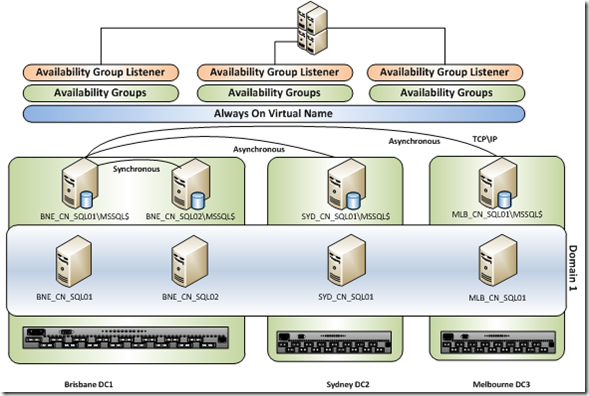
AlwaysOn is an integrated high-availability (HA) and disaster recovery (DR) solution that provides redundancy within a SQL Server data center. It allows fast application failover during both scheduled and unplanned downtime. AlwaysOn provides failover cluster instances, multiple secondary, active secondary, and connection director features.
It is an excellent feature in SQL Server 2012 and 2014 Enterprise edition.AlwaysOn has been depicted as the next evolution of database mirroring, as it enhances the existing data mirroring technologies to provide a strong layer of HA and DR.
6 Benefits and Features of AlwaysOn in SQL Servers
1. Combined HA/DR: It combines HA and DR because you have live, up-to-date copies of your database, which are usable in read-only mode residing on several secondary servers.
2. Zero Data Loss Protection: AlwaysOn assumes you are using synchronous data replication, where the primary replica sends a transaction to the secondary. In this way, even though there is some latency, your data is absolutely safe. It is possible to set up asynchronous data flow, where the primary replica sends a transaction to the secondary but does not wait for it to harden the log. There is a chance of data loss, but the transactions are executed faster.
3. Failover of Multiple Databases: Unlike data mirroring where the databases fail over individually and failover clustering where the entire instance fails over, databases in an AlwaysOn group will all fail over together.
4. Automatic or Manual Failover: It is possible to set the failover of the AlwaysOn group manually or automatically. If you choose the automatic failover, you have to use synchronous data flow. However, if you use asynchronous data flow, failover should be manual.
5. Local or Shared Storage: Different from failover clustering, shared storage is not compulsory with AlwaysOn.
6. Enhanced Performance: The performance of your primary replica will be enhanced as you offload some of the read-only and maintenance tasks to the secondary replicas. Many of these operations take up a lot of resources, so offloading them optimizes the performance of the primary replica.
Implementing AlwaysOn
Now that we have discussed the basic features and benefits of what an AlwaysOn solution could possibly provide, you are ready to start and plan for implementing this solution to meet your ever increasing High-Availability requirements and Disaster Recovery needs.
Your final solution could look something like the graphic on this post.
Get Your Free Database Evaluation Today
Getting started is simple. Click the button below to request your free one-hour database assessment from the DBA experts at Soaring Eagle Consulting®.



